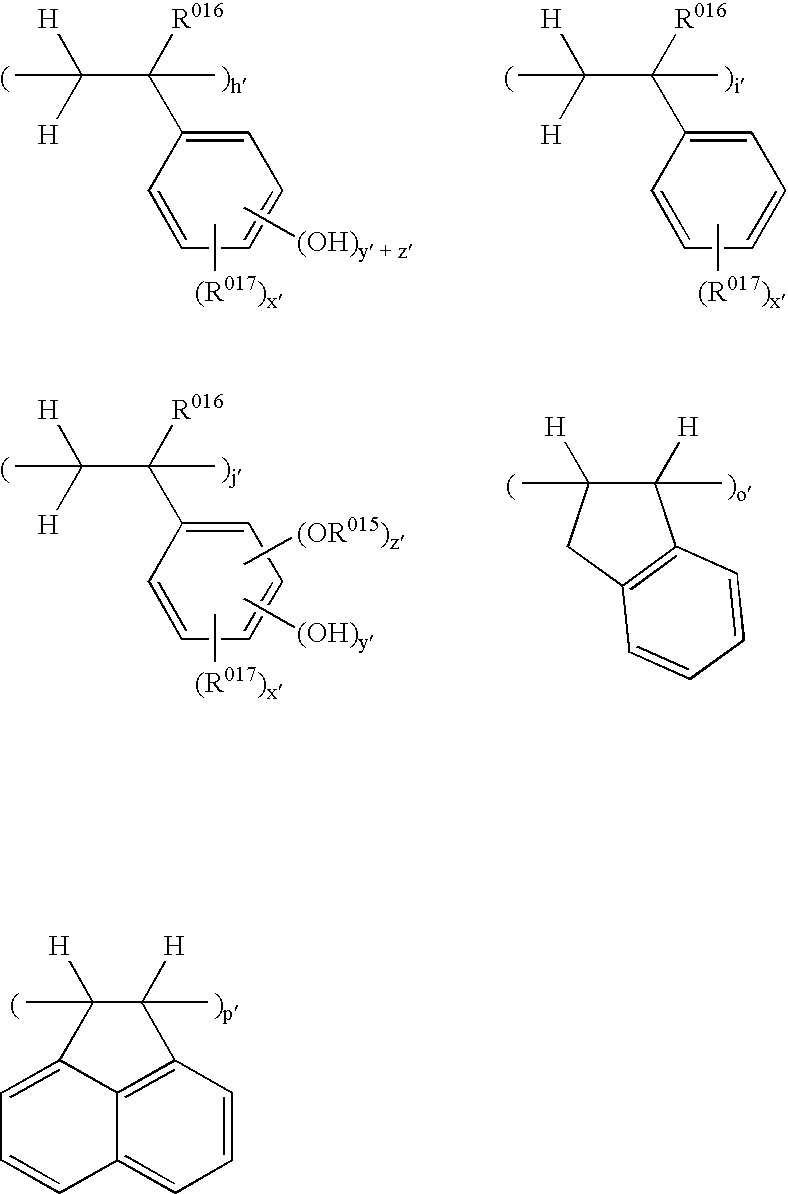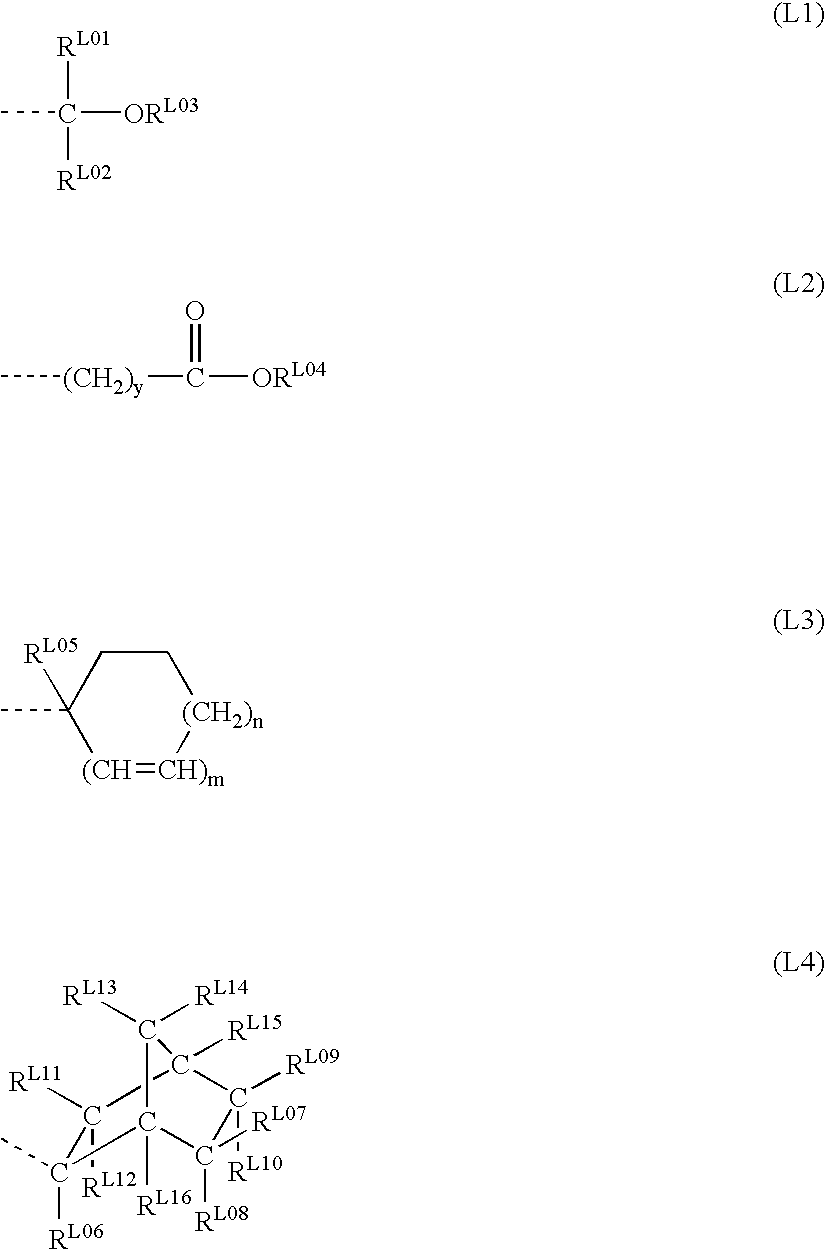Resist composition and patterning process
a composition and patterning technology, applied in the field of resist composition and patterning process, can solve the problems of bulky hydrophobic structure, performance penalty of semiconductor devices, defects, etc., and achieve the effect of minimizing defects and high resolution
- Summary
- Abstract
- Description
- Claims
- Application Information
AI Technical Summary
Problems solved by technology
Method used
Image
Examples
examples 2-1 to 2-42
and Comparative Examples 2-1 to 2-35
[0324]A resist solution (selected from inventive resist compositions R-01 to 42 and comparative resist compositions R-43 to 77) was spin coated onto an antireflective coating (AZ Electronic Materials, 1C5D, 44 nm) on a silicon wafer and baked at 110° C. for 60 seconds to form a resist film of 200 nm thick. The resist film was exposed in an exposure dose of 30 mJ / cm2 using an ArF excimer laser stepper (Nikon Corporation; NA 0.68), then baked (PEB) for 60 seconds, and puddle developed with an aqueous solution of 2.38 wt % tetramethylammonium hydroxide for 30 seconds, thereby forming a pattern on the wafer. The pattern consisted of alternately arranged rectangular empty regions and remaining regions of 2.5 cm×3.3 cm. The PEB step was at an optimum temperature for a particular resist composition. The pattern-bearing wafer was observed under a flaw detector WIN-WIN50 1200L (Tokyo Seimitsu Co., Ltd.), counting the number of residues on the substrate.
[03...
examples 3-1 to 3-42
[0327]A resist solution (selected from inventive resist compositions R-01 to 42) was spin coated onto an antireflective coating (Nissan Chemical Industries Ltd., ARC29A, 78 nm) on a silicon wafer and baked at 110° C. for 60 seconds to form a resist film of 170 nm thick. The resist film was exposed using an ArF excimer laser stepper (Nikon Corporation; NA 0.68), then baked (PEB) for 60 seconds, and puddle developed with an aqueous solution of 2.38 wt % tetramethylammonium hydroxide for 30 seconds, thereby forming a 1:1 line-and-space pattern. The PEB step was at an optimum temperature for a particular resist composition. The pattern-bearing wafer was observed under a top-down scanning electron microscope (SEM). The optimal exposure (Eop, mJ / cm2) was defined as the exposure dose which provided a 1:1 resolution at the top and bottom of a 0.11-μm line-and-space pattern. The maximum resolution of the resist was defined as the minimum line width (in increments of 0.01 μm) of the lines and...
PUM
| Property | Measurement | Unit |
|---|---|---|
| refractive index | aaaaa | aaaaa |
| wavelength | aaaaa | aaaaa |
| wavelength | aaaaa | aaaaa |
Abstract
Description
Claims
Application Information
 Login to View More
Login to View More - R&D
- Intellectual Property
- Life Sciences
- Materials
- Tech Scout
- Unparalleled Data Quality
- Higher Quality Content
- 60% Fewer Hallucinations
Browse by: Latest US Patents, China's latest patents, Technical Efficacy Thesaurus, Application Domain, Technology Topic, Popular Technical Reports.
© 2025 PatSnap. All rights reserved.Legal|Privacy policy|Modern Slavery Act Transparency Statement|Sitemap|About US| Contact US: help@patsnap.com



